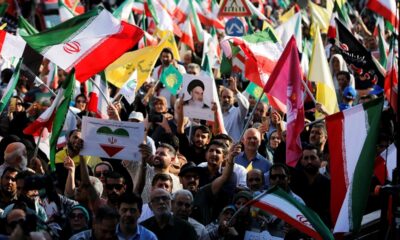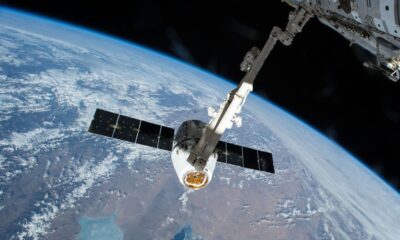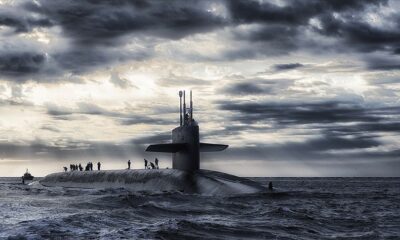Asia
Japanese warship transits Taiwan Strait for first time, Beijing reacts
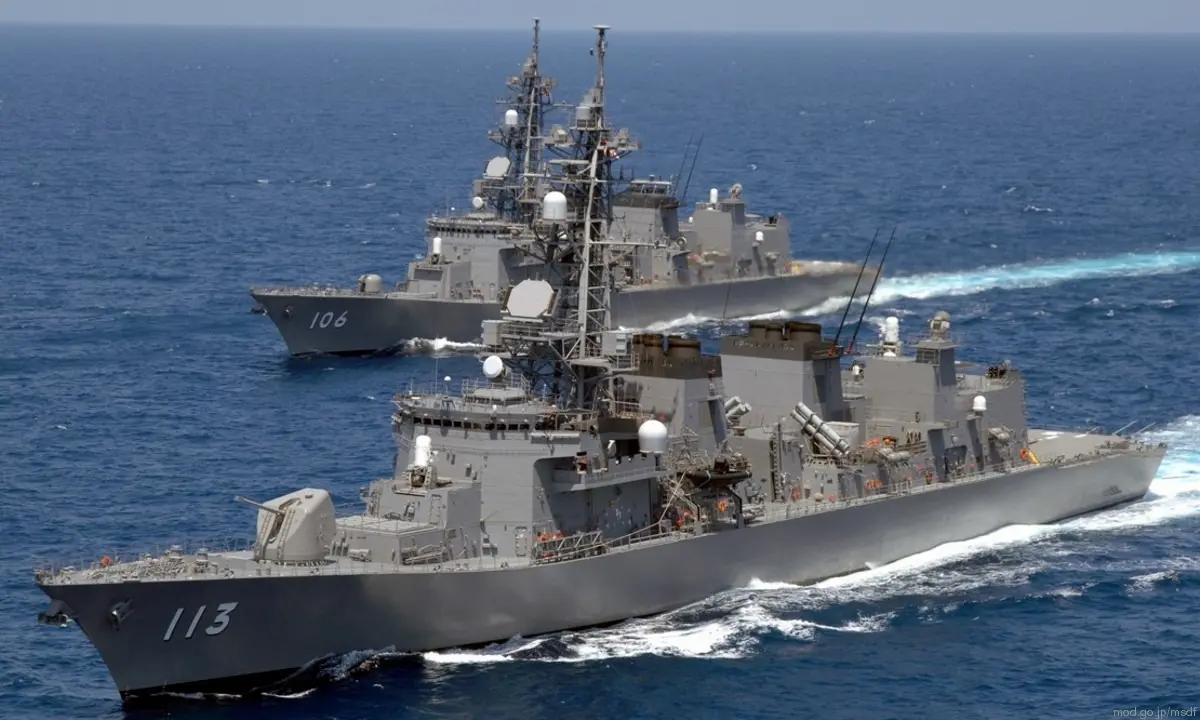
A Japanese Maritime Self-Defence Force ship transited the Taiwan Strait for the first time on Wednesday, Japanese media reported.
The Japanese destroyer Sazanami, along with ships from the Australian and New Zealand navies, ‘transited’ the narrow waterway between mainland China and the island of Taiwan, Kyodo news agency said.
The ships are believed to have been in the South China Sea for exercises, Kyodo reported.
The People’s Liberation Army (PLA) followed and monitored them throughout the process, and the situation was under control,’ the Chinese newspaper Global Times reported, citing unnamed sources.
China warned on Thursday that it was ‘extremely vigilant’ and had complained to Japan after the latter said it had sent a ship into the Taiwan Strait.
When a Japanese self-defence force ship entered the Taiwan Strait, the Chinese military … handled the matter in accordance with the law,” foreign ministry spokesman Lin Jian said, adding that ‘China is extremely vigilant about the political intentions of Japan’s actions’.
The crossing came about a week after Tokyo protested to Beijing over the new route taken by the PLA Navy’s Liaoning aircraft carrier and two destroyers on their way to the Pacific.
The Liaoning and two Type 052D guided missile destroyers sailed through the East China Sea towards Japan’s adjacent territories, passing between the islands of Yonaguni and Iriomote.
A month ago, amid escalating regional tensions, Japan announced that a Chinese military aircraft had entered its airspace and that Japanese warplanes had responded.
Relations between the two Asian powers have become even more problematic as Tokyo’s geopolitical and military alignment with the United States has deepened.
Asia
China’s retail sales beat expectations amid ongoing property slump

Economic data released by China indicated an improvement in consumption during May.
Retail sales exceeded expectations ahead of a major online shopping festival, even as US tariffs continued to negatively impact the country’s manufacturing and exports.
According to data released today (June 16) by the National Bureau of Statistics (NBS), retail sales, a key indicator of consumption, grew by 6.4% in May, compared to the 5.1% growth recorded in April.
The figure surpassed the 4.85% growth forecast by financial data provider Wind.
The increase in consumption figures came as China prepared for one of the year’s largest online shopping festivals on June 18, and as the government continued to boost consumer spending through a trade-in program for white goods and other household items.
According to the Ministry of Commerce, China’s trade-in program generated approximately 1.1 trillion yuan ($153 billion) in sales this year as of May 31. However, some regions have suspended their programs in recent weeks due to a depletion of funds.
Zhang Yuhan, chief economist at The Conference Board’s China Center, said the retail data “looked strong,” attributing this to a combination of “holiday effects and the ongoing impact of consumption-stimulating policies,” particularly in the dining and home appliance segments.
NBS data showed that sales of home appliances and audiovisual equipment increased by 53% in May, following a 38.8% rise in April.
However, Zhang noted that “China-US trade tensions, low industrial product prices, and a sluggish real estate market will be constraining factors for growth.”
Under pressure from US tariffs and fierce domestic competition, industrial production increased by 5.8% year-on-year in May, according to NBS data.
This figure was below the 6.1% growth recorded in April but exceeded Wind’s forecast of a 5.66% increase.
The NBS stated that the Chinese economy has maintained its stability while withstanding multiple pressures.
NBS spokesman Fu Linghui said, “Looking ahead, China has sufficient policies that can be dynamically adjusted according to changing conditions and will continue to provide strong support for maintaining stable and sustainable economic growth.”
The data follows last week’s announcement of the lowest quarterly export growth.
China’s national fixed-asset investment rose by 3.7% in the first five months of 2025, down from a 4% increase in the January-April period and below Wind’s forecast of 4.04%.
Real estate investment, which has long been a drag on the economy following solvency issues at several major property developers, continued to decline. It fell by 10.7% year-on-year in the January-May period, compared to a 10.3% drop in the first four months.
New home sales by floor area fell by 2.9% in the first five months, following a 2.8% decline in the first four months.
According to data from China Real Estate Information, the sales revenue of China’s top 100 real estate developers recorded a year-on-year decline of 7.1% in the January-May period. This drop was greater than the 6.7% decline recorded in the January-April period.
Zhang Zhiwei, president and chief economist at Pinpoint Asset Management, warned that the outlook for the Chinese economy remains uncertain, as the May data sent “mixed messages.”
Zhiwei stated, “The concentration of export activities in the first half of the year helped the manufacturing sector stay afloat. It is uncertain how long exports can sustain this momentum in the second half of the year.”
According to Huang Zichun, a China economist at Capital Economics, export growth is likely to slow further by the end of the year, as US tariffs remain high and exporters face broader restrictions.
Huang said this year’s budget indicates that fiscal support will slow in the second half of the year, while the ongoing downturn in the real estate sector will continue to weigh on growth.
The combination of these factors points to a further slowdown in the economy, with growth projected to be around 3.5% by the end of the year.
Meanwhile, government data showed that the urban unemployment rate fell to 5% in May from 5.1% the previous month.
Asia
AUKUS deal under scrutiny as US reconsiders its commitment

The Pentagon has initiated a review of the AUKUS submarine agreement, which was signed with the United Kingdom and Australia in 2021.
According to six sources familiar with the matter who spoke to the Financial Times, the review process, which will determine whether the US should cancel the project, is being led by Elbridge Colby, a senior defense official who has previously expressed skepticism about AUKUS.
The review has sparked concern in London and Canberra.
Some critics and experts have argued that the AUKUS deal could undermine US national security, as the navy is already struggling to produce enough American submarines to counter China’s growing naval power.
Australia and the UK plan to jointly produce a new class of attack submarines, named SSN-Aukus, which are scheduled to enter service in the early 2040s. However, the US has committed to selling Australia up to five Virginia-class submarines starting in 2032 to bridge the gap as its current fleet is retired. This commitment would almost certainly be voided if the US were to withdraw from AUKUS.
Last year, Colby wrote on X that he was skeptical of AUKUS, stating it would be “insane” for the US to reduce its number of nuclear-powered attack submarines, known as SSNs, in the event of a conflict over Taiwan.
In March, Colby said it would be “great” for Australia to have SSNs but warned of a “very real threat of conflict in the coming years” and that US SSNs would be “absolutely essential” for defending Taiwan.
Skeptics of the nuclear technology-sharing agreement have also questioned whether the US should help Australia acquire submarines without a firm commitment to use them in a potential war with China.
Kurt Campbell, the Biden administration’s deputy secretary of state and an American architect of AUKUS, emphasized last year the importance of Australia having SSNs that could work closely with the US in a conflict over Taiwan. Canberra, however, has not linked its need for these vessels to a potential conflict over Taiwan.
This review comes at a time of growing anxiety among US allies about the potential policies of a new Trump administration. Colby has told the UK and other European allies to focus more on the Euro-Atlantic region and reduce their activities in the Indo-Pacific.
A source close to the AUKUS discussions said Canberra and London were “incredibly worried” about the review of the agreement.
“AUKUS is the most significant military and strategic initiative between the US, Australia, and the UK in generations,” Campbell told the Financial Times.
“Efforts to enhance coordination, defense spending, and common objectives should be welcomed. Any bureaucratic attempt to undermine AUKUS would create a crisis of confidence among our closest security and political partners,” he added.
Pressure to increase defense spending
The Pentagon has been pressuring Australia to increase its defense spending. US Secretary of Defense Pete Hegseth called on Canberra this month to raise its spending from 2% to 3.5% of its GDP. In response, Australian Prime Minister Anthony Albanese stated, “We will determine our own defense policy.”
Charles Edel, an Australia expert at the CSIS think tank in Washington, noted, “Australia’s defense spending is increasing gradually, but not as quickly as that of other democratic states, and it is not at a level sufficient to cover the costs of either AUKUS or its current conventional forces.”
John Lee, an Australian defense expert at the Hudson Institute, said the pressure on Canberra is mounting as the US focuses on deterring China from attacking Taiwan within this decade. Lee added that if Australia does not increase its defense spending to 3% of its GDP, its navy will rapidly weaken.
“This would be unacceptable for a Trump administration,” Lee stated. “If Australia continues on this path, it is likely that a Trump administration would freeze or cancel Pillar 1 of AUKUS [the part related to submarines] to compel Australia to increase its military spending within the next five years.”
America First
A source close to the review said it was unclear whether Colby was acting alone or as part of a broader effort by the Trump administration. “The general consensus is that the former is true, but the uncertainty has confused Congress, other government departments, and Australia,” the source said.
A Pentagon spokesperson stated that the department is reviewing AUKUS “to ensure this initiative from the previous administration is aligned with the president’s ‘America First’ agenda.” The spokesperson added that Hegseth has “made it clear he intends for the department of [defense] to focus primarily on the Indo-Pacific region.”
Several people familiar with the matter said the review would last 30 days, though the spokesperson declined to comment on the timeline. “Any changes to the administration’s approach to AUKUS will be announced through official channels when appropriate,” they said.
A British government official said the UK was aware of the review. “This is sensible for a new administration,” the official noted, adding that the Labour government is also reviewing AUKUS.
“We have reiterated the strategic importance of the UK-US relationship, announced additional defense spending, and confirmed our commitment to AUKUS,” the official added.
The Australian embassy in Washington declined to comment.
The AUKUS agreement and China’s reaction
The AUKUS agreement, aimed at helping Australia build a fleet of nuclear-powered submarines through technology transfer from the US and the UK, was signed on September 16, 2021.
Under the security pact, named from an acronym of the three countries’ names, at least eight nuclear-powered submarines will be built at shipyards in Adelaide, the capital of South Australia.
The agreement is widely seen as a pact to counterbalance China’s military power in the region.
China has reacted strongly to the deal, emphasizing that the alliance will undermine regional peace and stability, as well as international efforts toward nuclear non-proliferation.
Asia
Pakistan boosts defense spending by 17% amid tensions with India
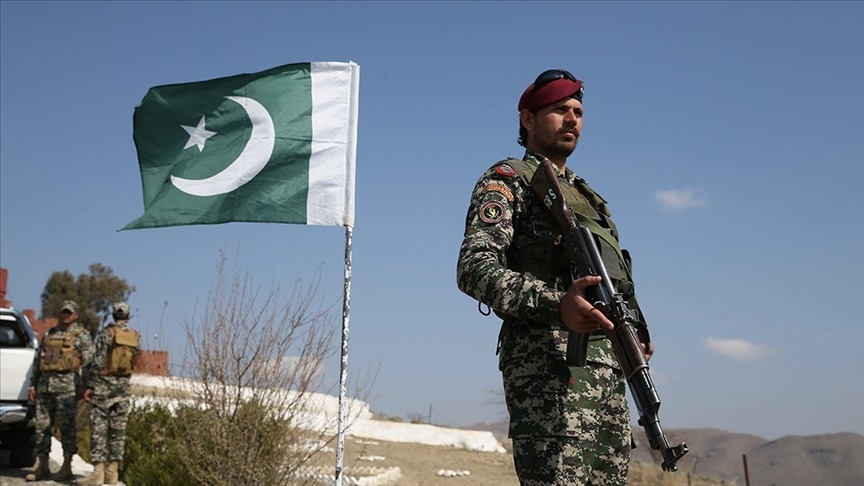
Pakistan has significantly increased its defense spending in its latest budget, citing growing security demands following recent military tensions with India. In contrast, development spending has been curtailed to meet the fiscal discipline conditions set by the International Monetary Fund (IMF).
On Tuesday, Pakistan announced its budget for the 2026 fiscal year, which begins on July 1. The total expenditure is set at $62 billion, with $29 billion allocated for debt financing. The most notable development in the budget is the allocation of $9 billion for defense spending, an increase of approximately 17% from the previous year.
This move comes as Pakistan reassesses its military preparedness following recent conflicts with India. In the four-day conflict that began on May 7, 51 people were killed on the Pakistani side, while at least 16 lost their lives on the Indian side.
Experts have noted that the increase in defense spending was inevitable.
“In Pakistan, the most serious conflict with India in several decades will certainly create an incentive to increase defense spending,” South Asia analyst Michael Kugelman told Nikkei Asia. “The public’s support for efforts against India gives civilian and military leaders the political space to take these steps,” he added.
Some believe the government should allocate even more to defense. One group advocating for this is Tola Associates, a tax advisory and consulting firm. In a recently published budget report, the company stated that defense spending should be increased by 32%. “Due to the state of war with the neighboring country and the recruitment of new army personnel, it is recommended that the defense budget for the 2026 fiscal year be increased to $10 billion,” the report noted.
Other experts argue that the issue is not just about how much the total defense budget will increase. “India’s defense spending remains nearly nine times that of Pakistan,” Syed Muhammad Ali, an Islamabad-based security analyst, told Nikkei. “This large gap indicates that Islamabad wants to deter India credibly and cost-effectively without engaging in a costly arms race in the region.”
Other officials and experts told Nikkei that Pakistan will focus on strengthening its air defense capabilities among its three armed forces.
“Pakistan will purchase HQ-19 missiles from China to strengthen its air defense against future Indian attacks,” a government official, speaking to Nikkei on the condition of anonymity, said. The HQ-19 is a Chinese-made surface-to-air missile system designed to counter medium-range ballistic missiles.
Kugelman said that Pakistan will make decisions on defense spending to strengthen weak areas revealed in the recent conflict, with such air defense systems at the top of the list. “India was able to deploy missiles and drones deep into Pakistani territory, and it did so quite intensively. This is a key area where we can expect some of the funding increase to be directed,” he added.
Ali also believes that air defense and related areas will be a priority. “Contrary to traditional land-air-sea warfare concepts, the role of air and space power, such as beyond-visual-range air combat, electronic warfare, drone warfare, missile warfare, and cyber warfare, is increasingly growing,” he said.
However, Pakistan’s budget is also under strict scrutiny from the IMF, which signed a $7 billion loan agreement with Islamabad last September.
“As Pakistan remains in the 37-month IMF program until 2027, the Fund plays a central role in shaping the budget,” Naafey Sardar, an assistant professor of economics at St. Olaf College in the US, told Nikkei. “Without the IMF’s approval, Pakistan cannot receive the financing tied to the program or support from other multilateral lending institutions,” he added.
“The IMF will push for stricter compliance and a broader tax base. This increases the likelihood of new tax hikes in certain sectors and limited relief for the salaried class,” he stated.
The IMF’s demand for strict budget implementation has led Pakistan to cut its development spending.
In the upcoming budget, Pakistan has allocated $3.5 billion for development expenditures, a sharp decrease of $1.4 billion from the previous budget.
“This cut will further hinder and potentially slow down significant social and infrastructure projects, especially since development spending has repeatedly been the target of budget cuts in recent years to meet IMF program objectives,” Sardar told Nikkei.
“In such a scenario, when the defense budget increases, the [development] budget allocated for health and education decreases,” said Tahir Naeem Malik, a professor at the National University of Modern Languages in Islamabad.
“With a population of 250 million, Pakistan has great needs in these sectors. This creates a contradiction: should the focus be on human development or on defense?” Malik asked.
-

 Opinion1 week ago
Opinion1 week agoEuropean defense autonomy and Germany’s military role enter a turning point
-
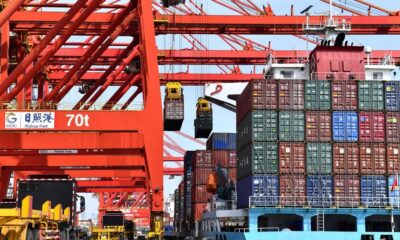
 Asia2 weeks ago
Asia2 weeks agoOECD forecasts slower Chinese economic growth due to trade war
-

 Asia2 weeks ago
Asia2 weeks agoLee Jae-myung inaugurated as South Korea’s new president, vows unity and economic revival
-

 America2 weeks ago
America2 weeks agoAI’s potential ‘white-collar massacre’ sparks debate on job future, says Amodei
-
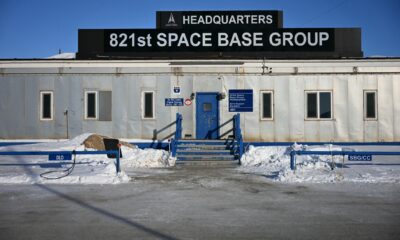
 America2 weeks ago
America2 weeks agoPentagon to shift Greenland oversight to Northern Command
-

 Diplomacy3 days ago
Diplomacy3 days agoFormer diplomat warns forcing Iran out of the NPT is the greatest danger
-
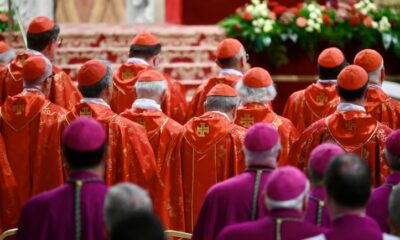
 Europe2 weeks ago
Europe2 weeks agoVatican under Pope Leo XIV warns against AI ‘playing God,’ urges ethical development
-
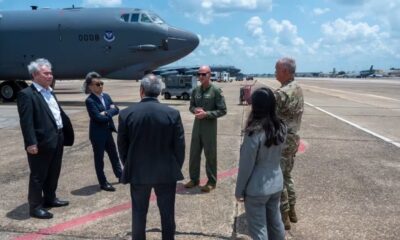
 Asia1 week ago
Asia1 week agoJapan, US showcase B-52 bombers in nuclear deterrence dialogue




